The relationship of the Hondurans with aviation has been a long and fruitful one. As a matter of fact, the Hondurans can claim that the very first air service in Central America was established there in 1922, when Dr. T.C. Pounds, an oculist from New York, obtained a Mail contract from the Honduran Government, and formed the company “Central American Airlines” in 1923. In 1925 Pounds brought an Aeromarine 39L to the country and with it came a pilot, Sumner Morgan who became Pounds’ partner.
Dr. Pounds’ venture lasted for a couple of months only, and then the “Empresa Dean” -an automobile dealership- began another air-venture that also failed. It was then that the airmail contract was picked up by the “Tela Railroad”, a subsidiary of the United Fruit Company, and whose history is very well documented on the excellent article “Fruit Flyers” written by Carlos Rosa for LAAHS. The renowned TACA airlines, a lifetime project of Lowell Yerex, was also born in Honduras, and from there TACA expanded throughout the continent until it was shot-down by the long arms of Pan American. To say the least, Honduras has a very rich and interesting aviation heritage, both civil and military.
At the time of the first L-188 arrival in Honduras, there were two major airlines in the country: “Transportes Aéreos Nacionales” -TAN- which was a private owned company; and a semi-private venture named “Servicios Aéreos de Honduras, S.A.” -SAHSA- which at some point had the Honduran government retaining 40% of its shares,
TAN’s Electras
The Transportes Aéreos Nacionales airline, better known as TAN, was founded in August 1947 as a freight/charter airline. First cargo operations were started with a handful of Curtiss C-46 Commando transports. Less than three years later, in August 1950, TAN started its international Cargo routes when the US government granted the airline rights to fly scheduled flights between Tegucigalpa and Miami. By 1951, the US government had authorized TAN to add a second international route, between San Pedro Sula and Miami. The airline became more relevant when in June 1954, TAN inaugurated routes to South America, specifically to Ecuador and Peru. With that, TAN could now compete with Pan American-Grace Airways -PANAGRA- as it had a route from Miami to Tegucigalpa and from there to the West Coast of South America. This breakthrough from freight carrier to a primary passenger network was only possible after TAN had entered into an agreement with the main airlines in Ecuador and Peru.
As the reader may know, PANAGRA was a major US airline and a Pan American Airways subsidiary. It had several routes from the US to South America. In 1954, TAN began to offer these same routes at a lower price. Many prices were a seventy-five percent less than those of PANAGRA, mainly due to the equipment used: a fleet of Douglas DC-3s and Curtiss C-46s that were not pressurized and were very cheap to operate compared to PANAGRA’s airplanes. In the end, the lower price strategy worked for TAN even though sometimes it had to cancel flights due to bad weather; something that PANAGRA’s pressurized planes could cope with easily.
By the early 1960s TAN began operating the faithful Douglas DC-6 for its international services; these good-looking planes though, were kicked-off of the stage in August 1968, when the age of the turboprop arrived in Honduras in the form of a Lockheed L-188CF “Electra” -C/N 1134- that was registered as HR-TNL, and entered service basically to support the routes to Miami and Mexico City. This particular airplane had been originally ordered by Capital Airlines with the registration N163H; then she was sold to Braniff Airlines, who registered her as N9710C in 1962. After Braniff, the airplane served with several owners until she ended up with Ayer & Associates, who, in turn, sold her to TAN.
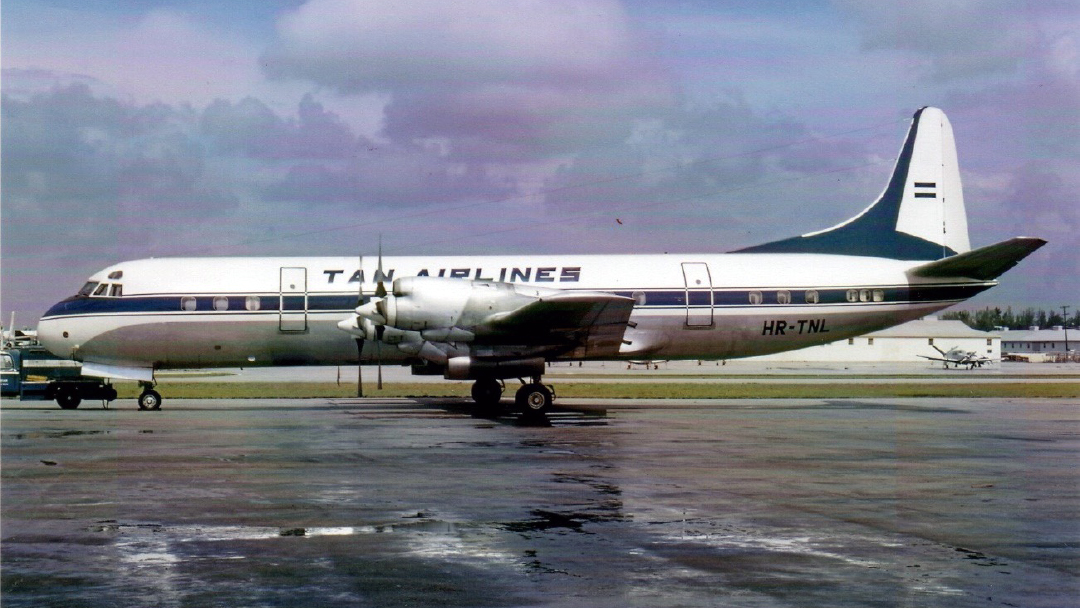
TAN acquired a second Electra in December 1970; she was a L-188C -C/N 1067- formerly operated by Braniff Airlines with the registration N9703C. Upon its arrival, this airplane was registered as HR-TNN, and like her sistership, she entered service in support of the Miami and Mexico routes.
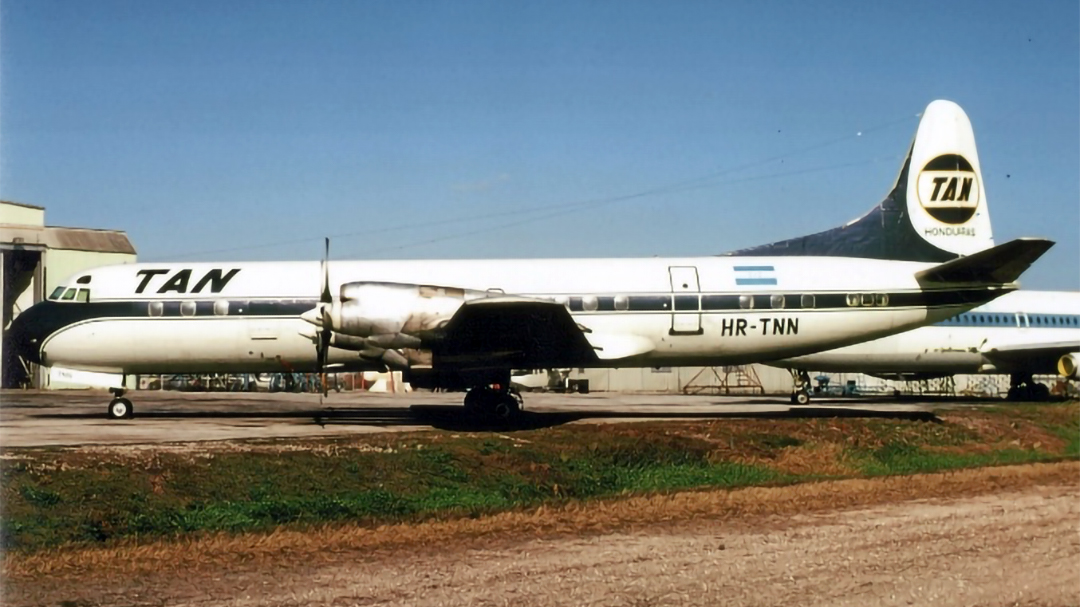
By the mid-70s, TAN acquired its first Boeing 737-200 jetliners, and the Electras were slowly relegated to a secondary role; one was kept in reserve, while the other flew to Mexico three times a week. Finally in 1976, it was decided to convert HR-TNL to a full cargo configuration. Such conversion was performed in Miami. Upon returning, and once again, this Electra replaced TAN’s DC-6s in the cargo hauling role, since the venerable Douglas transports were withdrawn from use shortly after.
On June 19, 1979, while flying a cargo run from Belize to Miami, HR-TNL had a dramatic close call when the propeller of the #3 engine broke off and hit the #4 engine, destroying it completely. The crew, comprised of Capt. Felix Bates, First Office René Romero and Flight Engineer Santiago Palomo, was able to make an emergency landing at Cancún, Mexico, with only the #1 and #2 engines working. Incredibly, the Mexican authorities at the airport jailed them for having landed without a flight plan! Fortunately, the three of them were freed upon explaining what had happened. In fact, the airplane was repaired in record time, departing Cancún in less than three weeks.
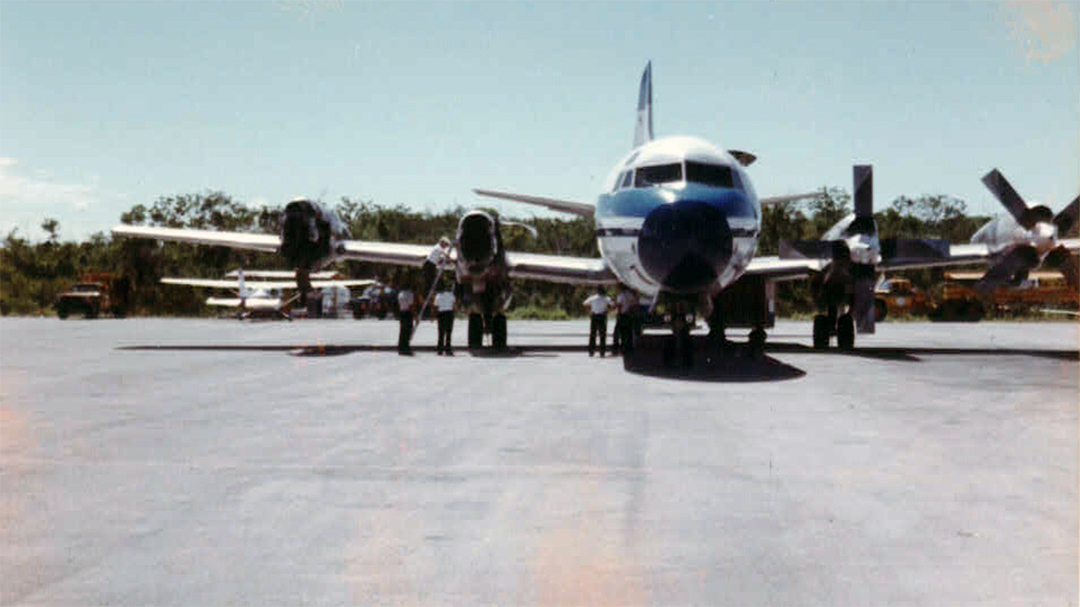
In 1982, TAN decided to sell HR-TNN to the Argentine Navy, where she was serialed as 6-P-102, and was at first, converted to cargo configuration, and later on became an electronic surveillance platform. In such capacity, the airplane was employed to patrol territorial waters in the search of hostile ships and submarines until 1991, when it was retired from service and was placed on display at the Comandante Espora Naval Air Base, in Bahía Blanca, Argentina.
Around that time, TAN began a close association with the airlines Servicios Aéreos de Honduras, S.A. -SAHSA- and Aerovías Nacionales de Honduras, S.A. -ANHSA- of which the former President of Honduras, Oswaldo López Arellano, was the majority shareholder. Shortly after, the airplanes began flying with the livery of SAHSA, but carrying the title of their respective airlines. In 1984, TAN finally ended up purchasing an L-188AF from SAHSA, which had been converted to cargo configuration. This Electra was registered as HR-TNT, and together with the other Electra, was operated on daily cargo runs from Miami, where they were based for several years.
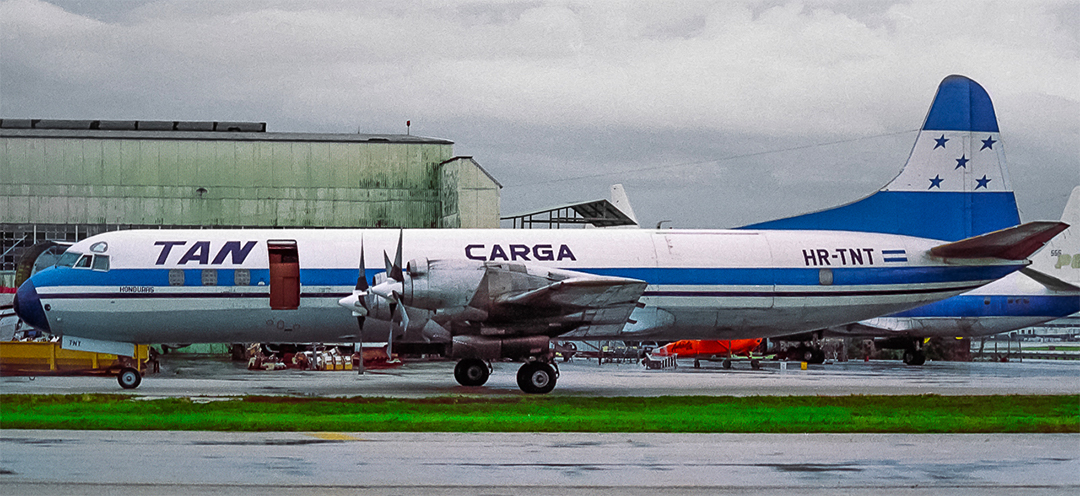
On March 21, 1990, HR-TNL suffered an accident at Cerro de Hula, South of Tegucigalpa, while attempting to land after a regular cargo flight from San Pedro Sula; the crash resulted in the loss of the three members of the crew, Capt. José Luis Vilchez, First Officer René Romero and Flight Engineer Oscar Armando Elvir. According to official reports, the plane approached Toncontin’s runway 01 in marginal weather conditions and slammed against the southern slopes of the mountain, 1000 ft below the established 7000 ft of minimum safe altitude at that point on the approach path.
When TAN ceased operating and disappeared in 1991, the only commercial L-188 remaining in Honduras was HR-TNT, but upon being returned to SAHSA she was re-registered as HR-SHN. Sadly, this Electra was operated less and less, until it was put up for sale in 1993. Three years later, she was acquired by CONAIR, a Canadian firm, who converted it to fire bomber. Currently, this Electra is flying for Air Spray Ltd. in Canada, registered as C-FZCS still active in firebombing configuration.
SAHSA’s Electras
Founded on October 8, 1945, with the help of Pan American Airways, SAHSA began its operations shortly after, mainly with a fleet of six Douglas DC-3s, provided by the North American giant, who also held 40 percent shares in the airline. SAHSA was envisioned as a PAA subsidiary for Central America and the main rival of TACA de Honduras, the latter’ operations being acquired by SAHSA later on, when TACA left the country.
SAHSA got off to a good start flying domestic routes at first, and it wasn’t until August 1946, that the airline began its first international service to Guatemala, with routes to El Salvador and Belize being added by 1949.
The first SAHSA’s L-188AF HR-SAV -C/N 1060- was acquired from Eastern Airlines in June 1969, where she had served under the registration N5532. Upon arrival, the plane was named “Lempira”, following the airline’s tradition of naming its planes after local indian caciques (chieftains). HR-SAV was to become the Electra that flew the longest in Honduras: from 1969 until 1992. This airplane also has the distinction of having flown for TAN Airlines as HR-TNT, and also for ANHSA as HR-ANE, and then she went back to SAHSA again, this time as HR-SHN. As mentioned before, this Electra is currently flying for Air Spray Ltd. Of Canada, in firebombing configuration, being the only ex-Honduran Electra still in service around the world.
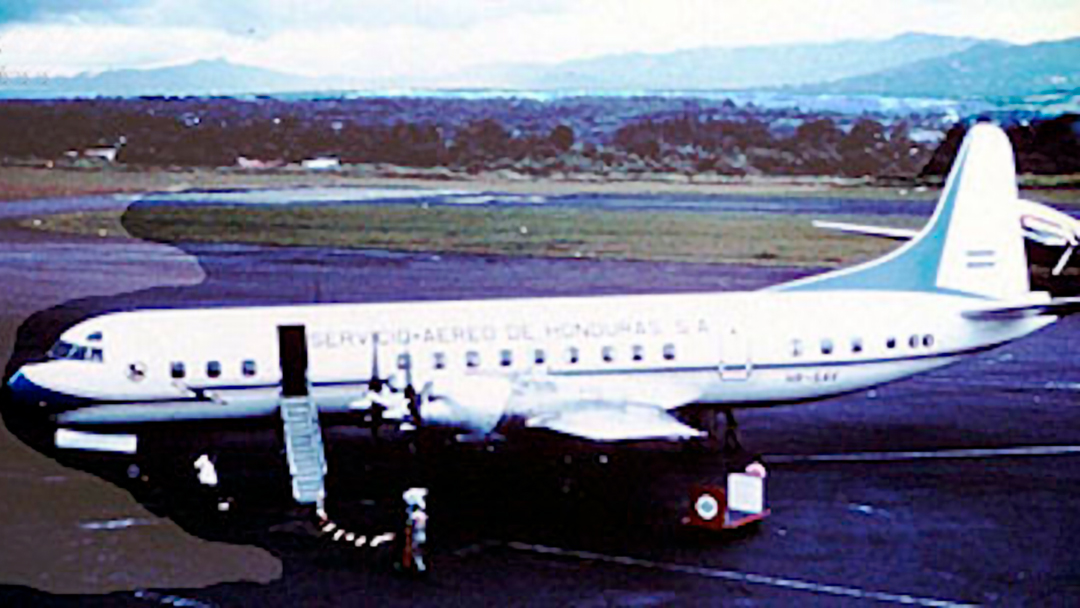
Upon its arrival, this Electra was scheduled to fly the routes to New Orleans and Central America and eventually to Panama and San Andres, Colombia.
In late 1970, a second Electra was added to the fleet with the registration HR-SAW . It was an L-188A -C/N 1018- which had been acquired from Eastern Airlines where she had been assigned the US registration N5513. With her incorporation, SAHSA was finally able to strengthen its service to Panama, San Andres and Central America. Following the airline’s tradition, this Electra was named “Copán Galel”, again after an indian cacique.
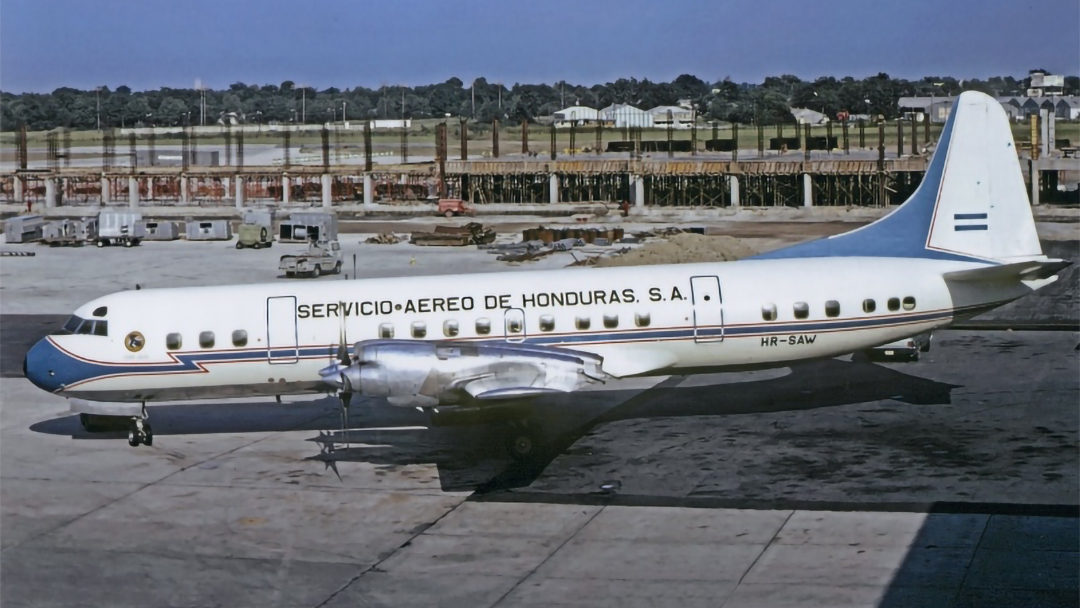
In 1977, HR-SAV was sent to San José, Costa Rica, where it was converted to cargo configuration at the COOPESA workshops. Upon its return, the airplane began flying cargo runs to Panama and New Orleans, while HR-SAW handled all the passenger flights.
On January 8, 1981, fate finally reached one of the SAHSA’s Electras on what was one of the most tragic accidents of the airline’s history. The day before, HR-SAW had arrived at La Aurora airport in Guatemala City, after having flown from Tegucigalpa without incidents. As the passengers deplaned, the Electra began to be serviced by the ground crews. It was at this point that a refueling truck approached the plane and hit one of the propeller’s blades. The next morning, HR-SAW’s crew decided to make a three-engine ferry flight back to Tegucigalpa, since there wasn’t a way to know if the engine had been damaged by the truck.
As they took off, the Electra experienced a total loss of hydraulic pressure making difficult for the pilot to control the airplane. A couple of seconds later the Electra went into a steep roll to the left, and quickly lost altitude until it crashed on the yard right in front of a girl’s school building, less than a mile West of the airport. On that day, Captain Jacobo Medina, First Officer Marco Antonio Ruiz, Flight Engineer Alfonso Rubio, and the stewardesses Raquel Baide, Maria E. Vidaurreta and Ana María Fúnez died upon impact. HR-SAW resulting completely destroyed during the accident.
Crash Investigators of the Guatemalan Civil Aeronautics Directorate started a preliminary investigation on the accident, but nothing conclusive came out. Later on, investigators of Lockheed and the U.S. National Transportation Safety Board were invited to join on a more thorough investigation, and soon, clues began to be found.
In the end, the accident was attributed to a loss of aerodynamic control because of limited hydraulic power availability when the landing gear retraction was initiated during takeoff with only one hydraulic pump operating. At that critical moment, the failure of one of the electrical buses caused the loss of all hydraulic pumps except one. The landing gear retraction caused such a hydraulic pressure and flow demand that the only pump working could not catch up, making the flight controls difficult to operate. A contributing factor was that the elevator trim-tab was in the neutral position rather than in the recommended 10-Degree nose-up setting for takeoff, making it difficult to climb.
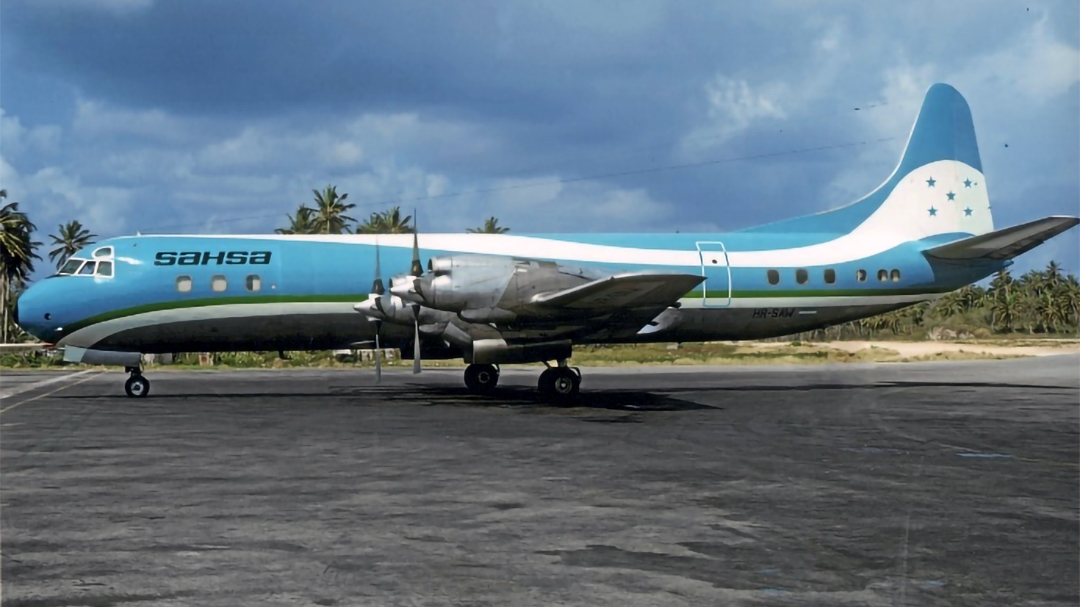
In light of the findings made during the investigation, a review of current published information about the plane’s electrical and hydraulic systems was initiated and soon Lockheed issued an information letter for the Electra operators. On such letter it was stated that for take off and landing, a minimum of three generators and three hydraulic pumps should be operating. The letter also said that if an in flight failure resulted in a complete hydraulic power loss, the flight controls should be shifted to “boost-off” and the published procedure for boost off flight and landing should be followed. During take-off , it was preferable to move the Landing Gear selector lever to the “Neutral” position in order to quickly restore control capabilities. Unfortunately for HR-SAW’s crew, there was no time as they were with their hands full, trying to wrestle a mistrimmed airplane that had entered on a nasty roll to the left at very low altitude.
As mentioned earlier, after the accident of HR-SAW, SAHSA was left with only one Electra (HR-SAV), which was sold to TAN later on, when the two companies merged, and returned to SAHSA when TAN went out of business. With the disappearing of SAHSA by the mid 90s, this airplane was put up for sale and ended up in Canada, in firebombing configuration.
The “Triple 5”
The very last Honduran Electra arrived in the country in 1979, when the “Fuerza Aérea Hondureña” (Honduran Air Force) or FAH for its initials in Spanish, acquired an L-188A -C/N 1028- that could be converted to freighter configuration with relative ease, and that was assigned the serial FAH-555. As a matter of fact, this airplane is the only surviving Electra in Honduras, but has not flown since the time of Hurricane Mitch’s emergency in October 1998 when it was briefly brought back into service, making a couple of flights to pick up aid from neighboring countries, after being parked for many years at Toncontín. The Triple 5 was bought from Pacific Southwest Airlines, where it served as N6106A and carried the name “American Flagship Dallas.” At some point during its Honduran service, the plane was registered as HR-EMA, in order to simplify the paper work on flights to other countries, mainly the US.
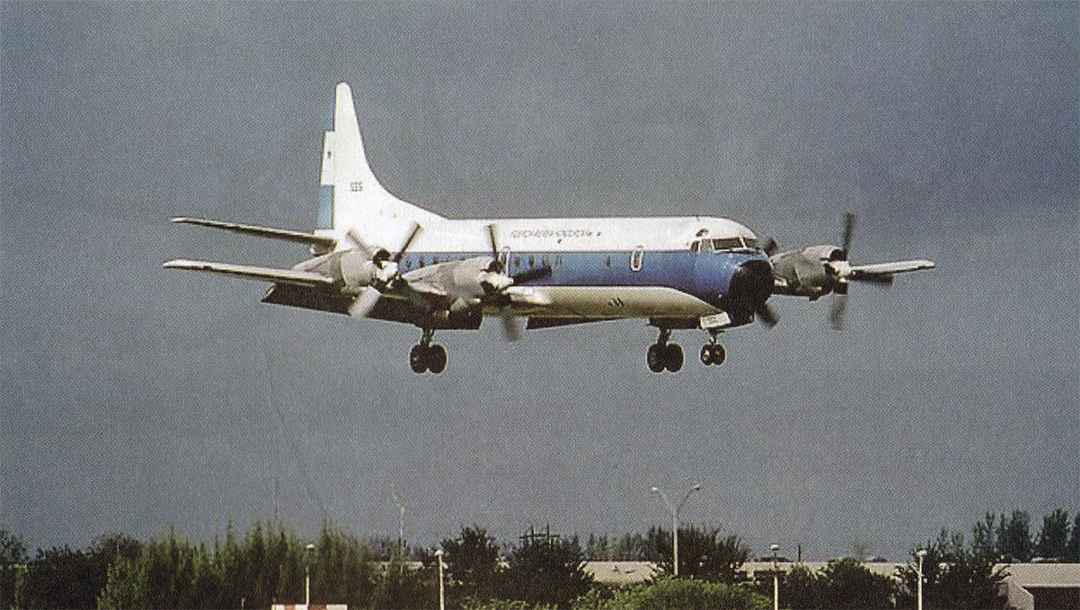
FAH-555 also has another type of history, a sporting history, since it contributed to the classification of Honduras for the 1982 World Soccer Cup that was about to take place in Spain, since the Honduras’ Selección Nacional de Fútbol (National Soccer Team) was flown in this airplane to the games where they played as visitors. She also served for the same purpose during the elimination round games for the 1986 and 1990 World Cups, conducting many flights, including to the distant San Vicente Island. When the Selección came back, already classified for the final “hexagonal” game series for the 1982 World Cup, the Triple 5 was escorted by two of the FAH’s Super Mystere B.2s during her approach to the Toncontín Airport, in Tegucigalpa.
As mentioned above, after being grounded for several years, Triple 5 made a couple of relief flights in the aftermath of hurricane Mitch in October 1998. Shortly after, she was returned to the junkyard where she began to rot away once again, until 2011 when she was put up for sale in an auction by the Honduran Government. In the end, FAH-555 was acquired by Air Spray Ltd. After several months of repairs, the airplane finally departed Tegucigalpa for Canada, where she was registered as C-GNPB. The ferry flight wasn’t free of mechanical mishaps, however, and it took almost two weeks for the crew to reach its final destination. In fact, upon arrival it was decided to relegate the former Triple 5 as a source of spares for the rest of Air Spray’s Electra fleet.
For approximately six years, and until the arrival of more modern Jet aircraft, the L-188 Electra II was the most outstanding example of commercial aviation in Honduras, serving even in the capacity of presidential airplane during that period, when the presidents and their entourages traveled to Mexico, Colombia, Venezuela and the Caribbean region. In the year 2000, airline Reeve Aleutian Airlines in Alaska, conducted the last flight of an L-188 Electra, carrying passengers. By that time, approximately 40 Electras survived in the world, the majority having been modified to the cargo and firefighting configuration. Now in 2021 less than a dozen electras still grace the sky most of them as firefighters.
Sources
- Article: The Hammer, by Peter Garrison. Published on the Air & Space Magazine, Smithsonian National Air & Space Museum. February / March 2001.
- Book: “Beyond the Horizons – The Lockheed Story” by Walter J. Boyne, St. Martin’s Press, New York 1998.
- Book: “The Electra Story: Aviation’s Greatest Mystery” by Robert J. Serling, Bantam Air & Space Series No. 9.
- Book: “Lockheed 188 Electra” by David G. Powers.

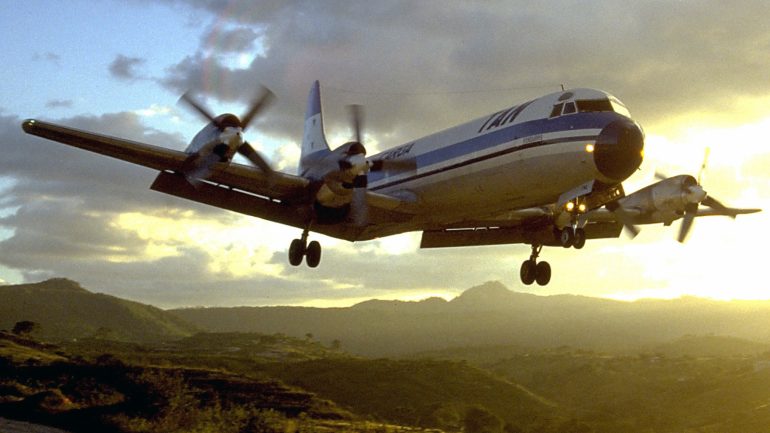


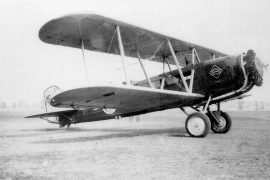
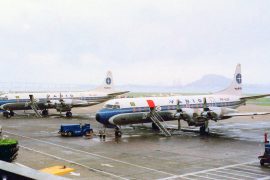
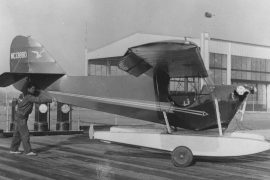
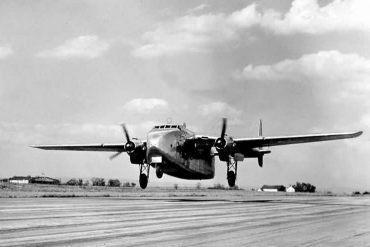
Hi, Mr Carlos J. Rodriguez
Do you know who is the sole ownership of the LockHeed L-188 that is registered # HR-SAW is for? Would they be willing to sell this aircraft? I will await your reply.
Jerry HR-SAW was lost in 1981 in Guatemala, the only surviving electra is ex HR-SAV which belongs to Air Spray in Canada